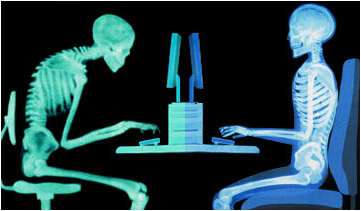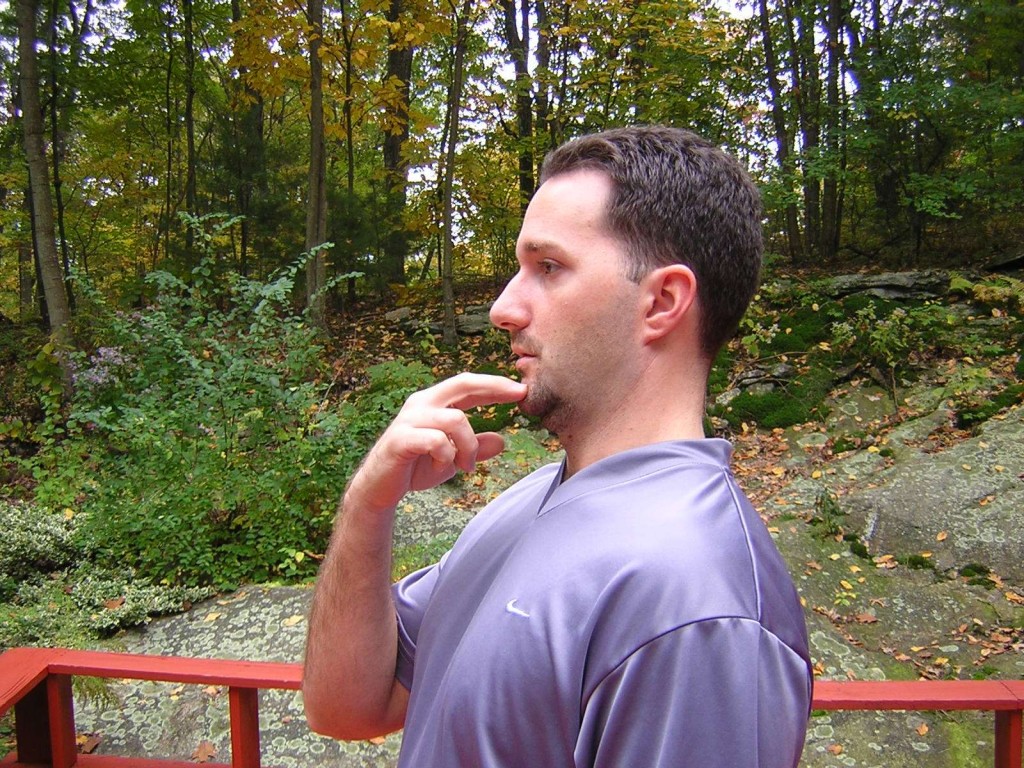Forward Head Posture: Causes and Strategic Fixes to Ensure Optimal Performance
Out of all the myriads of bodily dysfunctions, the one that is plaguing most of our modern world is the forward head posture (FHP). A typical FHP can be seen in most people that use smartphones often, work sedentary jobs or those that sit in front of a computer for long hours. People with FHP have their ears in front of their shoulders in a forward head position. This is due to:
1) Weak and lengthened deep neck flexors = Weak and lengthened frontal neck
Neck Flexors I:
A) Longus Capitis
B) Longus Colli
Neck Flexors II: Hyoids
2) Tight and overactive neck extensors = Tight and overactive posterior neck
Neck Extensors I: Levator Scapulae
Sternocleidomastoid
Anterior Scalenes
Neck Extensors II: Suboccipitals
The Negatives of FHP
The FHP places significant amounts of strain on the neck structures as they need to balance the weight of the head, which is around the weight of a bowling ball. According to the law of physics, the further away from the body a weight gets, the heavier it feels and the harder the muscles must work to hold it. It only takes an inch of FHP to increase the weight that the back muscles and ligaments must support by 10 lbs!
In people with FHP, cervical spine ligaments (neck ligaments) become stretched, which places an imbalanced pressure on the discs in the neck. In the long run, these structures become damaged and arthritis and disc problems can result.
Another feature of the FHP is the increase of pressure on the nerves at the base of the skull. This area narrows when the head is rotating upwards, thus pinching the nerves between the base of the skull and the top of the neck. The nerves in this region are attached to a sensitive layer covering the brain and can cause headaches. Women are more vulnerable to headaches and migraines since this space is typically more narrow than in men.
FHP can also affect breathing since it causes a decrease in the capacity of the lungs to hold oxygen due to the lungs being in a slouched, scrunched up position. This decrease in oxygen absorption can affect the way your digestive system absorbs nutrients and also complicate asthmatic conditions and circulatory problems.
Eliminating that FHP
Keep in mind that it takes most people a long time to develop that FHP. Therefore, you’re going to need to also spend an adequate amount of time to fix it. All it takes is consistency and patience.
Step 1: Strengthen those weak and lengthened deep neck flexors (frontal neck).
Exercise 1: Double Chin Nods
Remember forward head posture consists not only the head moving forward, but a rotating up of the head.
So, the motion performed in correcting forward head posture consists of retracting the head over the shoulders and performing a nodding motion downward, as if you are motioning “yes”. This nodding motion opens the space between the base of the skull and the top of the neck. Since we are targeting the deep muscles, there should be no activity in the superficial or top layer of muscles.
Therefore, when performing the forward head posture correction exercise, you can begin by placing your hand over the front of the neck to make sure you do not feel the muscles moving.
The head and neck are straight with retraction and then the chin comes slightly down, while the back of the head comes slightly up. Practice makes perfect, and it will take a little time to master this. It is the quality of the movement that matters, not quantity. Start by doing 2 sets of 15 and increase both the sets and reps every week.
Perform this motion and hold for a few seconds then relax. The better you get, the longer you can hold the position. It can be done sitting at a computer, driving, standing or lying down. It can be done without looking silly, so nobody knows you are actually exercising. It can be done as often as you like, even once an hour can have great benefits in correcting forward head posture.
You can see how it is done via this link: https://www.youtube.com/watch?v=NISl9KUXrZY
Exercise 2: Banded Chicken Bobs
For this exercise, simply choke a band around a pole. The band should be around your forehead height.
Start by placing the band around your forehead while facing away from the pole.
Walk forward a little until you pull the slack out of the band.
Start by retracting your neck to the double chinned position.
Then bob your head forward.
Repeat and make sure the entire duration of the movement is slow and controlled.
You can see how it is done via this link (start on 3:28):
Step 2: Perform soft tissue work and stretches on the tight and overactive neck extensors
First of all, soft tissue work or self massaging should be performed to loosen up, break up the scar tissues and muscle knots.
I would start by using the lacrosse ball or the Self Myofascial Ladder that we have in 619 as a way to get the superficial myofacsia and muscle layers. There is no right or wrong way to do it, just scope out for those painful spots on the back of your neck and apply small circular pressure to it. Perform this massage for 3-5 minutes.
The next massage is to be used with The Stick (a stick-shaped massaging device), which we also have here in.
Start by gripping both the end handles with an underhand grip.
Get it over your head and to the top part on the back of your neck and massage the suboccipitals (muscles around the base of the skull and top of the spine).
Try to play around with the angles to massage all the different neck extensors.
Perform this massage for 3-5 minutes
Lastly, perform the Double Chin Nod Stretch. In this stretch, you will maintain that double chin with using both of your hands to tilt the head forward slightly. You should feel it in the suboccipitals (muscles in the base of your skull and top of your neck). Hold the stretch for 2 sets of 40 seconds to start out with.
Life Style Changes to ensure FHP prevention
After talking about the causes and fixes of the FHP, one aspect that many people neglect is to incorporate a lifestyle that prevents the FHP from occurring again. A good way to start is to calculate the ideal height for your ergonomic desk, chair, and keyboard. That way, it will automatically put you in a posture that allows you to sit straight and with a good posture. Imagine if your computer screen is in such a low position that requires you to stick your neck forward and down to be able to focus on what the screen shows.
http://www.thehumansolution.com/ergonomic-office-desk-chair-keyboard-height-calculator.html
The above website can be used to calculate the ideal height for your desk, chair, and keyboard, which leaves us to one more question: what if I need to increase the height of my desk?
There are 2 solutions. Either you buy an adjustable table, or you buy bed risers. Bed risers can be purchased on: http://www.amazon.com/s/?ie=UTF8&keywords=bed+risers&tag=googhydr-20&index=aps&hvadid=35257866481&hvpos=1t1&hvexid=&hvnetw=g&hvrand=12550029720445718955&hvpone=&hvptwo=&hvqmt=e&hvdev=c&ref=pd_sl_7xmuy98o8c_e
You simply put the legs of your tables on top of the bed risers and you’ll have the right heighted table to support that good posture.
Besides making sure your posture is good while sitting down, it is also imperative to incorporate good posture in most of the activities you to everyday. An example would be to maintain that double chin while you’re deadlifting. A lot of people have their heads in an overly extended position in the bottom starting position of the deadlift. All you have to do is to look 45 degrees down while maintaining that double chin, and have your gaze eventually shift up to looking straight forward during lockout. The same thing goes with pushups: try to maintain that double chin position the entire time.
Recap
Causes of forward head posture
1) Weak and lengthened deep neck flexors = Weak and lengthened frontal neck
2) Tight and overactive neck extensors = Tight and overactive posterior neck
Fixes for Cause 1: Strengthen those deep neck flexors by doing the Double Chin Nods and the Banded Chicken Bobs each for 2 sets of 15 reps (remember to increase the sets and reps every week).
Fixes for Cause 2: Perform self myofascial release on the neck extensors using the lacrosse ball or the Self Myofascial Ladder for 3-5 minutes, The Stick for 3-5 minutes, and the Double Chin Nod Stretch for 2 sets of 40 seconds (increase either the sets or seconds every week).
Lastly, if you are serious about correcting that FHP, go to that website above and calculate the ideal height for your furniture. Buy those bed risers if you need to increase the height of your table. Your neck will thank you for it!
References
“Dissertations in Anthropology: Submitted to Educational Institutions of the World in Partial Fulfillment of Requirements for the Ph.D. Degree or Equivalent.” Yearbook of Anthropology No. (1955): 701-52. Upper and Lower Crossed Syndromes. Erik Dalton, Ph.D. Web. 11 July 2014.
“Forward Head Posture – Causes & Correction.” Forward Head Posture – Causes & Correction. N.p., n.d. Web. 11 July 2014.





